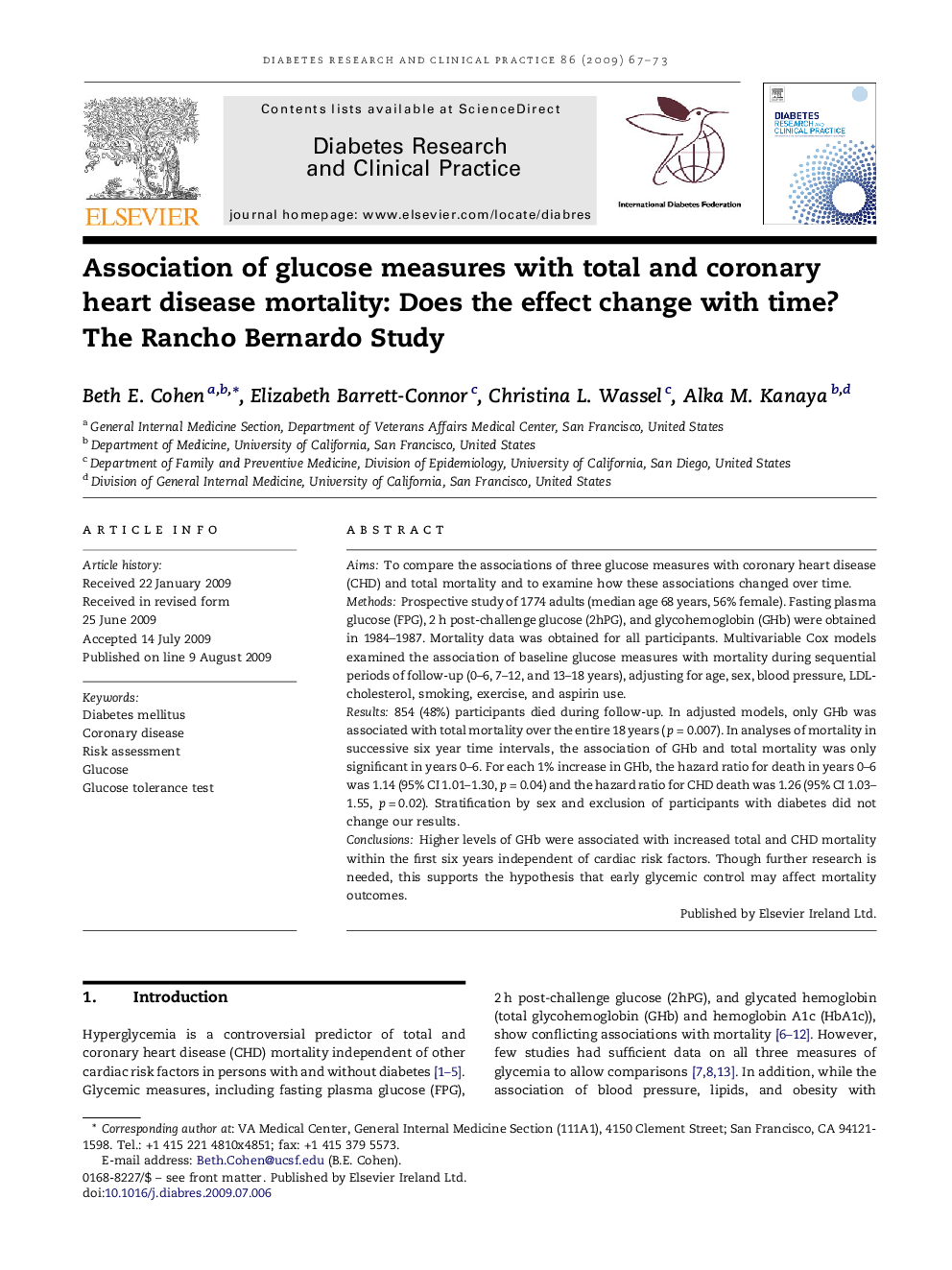| Article ID | Journal | Published Year | Pages | File Type |
|---|---|---|---|---|
| 2797803 | Diabetes Research and Clinical Practice | 2009 | 7 Pages |
AimsTo compare the associations of three glucose measures with coronary heart disease (CHD) and total mortality and to examine how these associations changed over time.MethodsProspective study of 1774 adults (median age 68 years, 56% female). Fasting plasma glucose (FPG), 2 h post-challenge glucose (2hPG), and glycohemoglobin (GHb) were obtained in 1984–1987. Mortality data was obtained for all participants. Multivariable Cox models examined the association of baseline glucose measures with mortality during sequential periods of follow-up (0–6, 7–12, and 13–18 years), adjusting for age, sex, blood pressure, LDL-cholesterol, smoking, exercise, and aspirin use.Results854 (48%) participants died during follow-up. In adjusted models, only GHb was associated with total mortality over the entire 18 years (p = 0.007). In analyses of mortality in successive six year time intervals, the association of GHb and total mortality was only significant in years 0–6. For each 1% increase in GHb, the hazard ratio for death in years 0–6 was 1.14 (95% CI 1.01–1.30, p = 0.04) and the hazard ratio for CHD death was 1.26 (95% CI 1.03–1.55, p = 0.02). Stratification by sex and exclusion of participants with diabetes did not change our results.ConclusionsHigher levels of GHb were associated with increased total and CHD mortality within the first six years independent of cardiac risk factors. Though further research is needed, this supports the hypothesis that early glycemic control may affect mortality outcomes.
